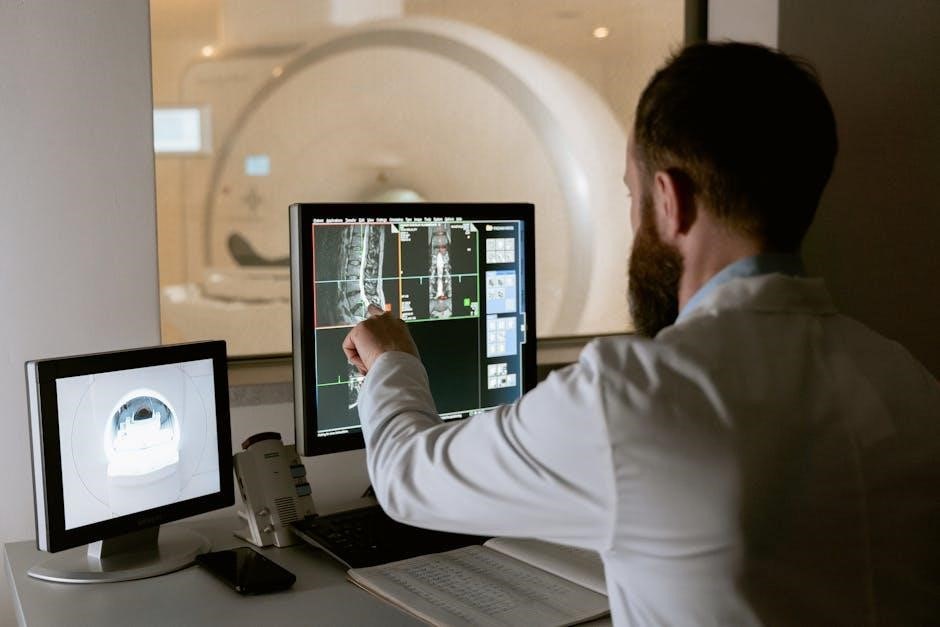to identify symptoms and develop treatment plans effectively online every day always.
Definition and Importance of Dysarthria Assessment
Dysarthria assessment is a crucial process that involves evaluating an individual’s speech and language abilities to determine the presence and severity of dysarthria, a motor speech disorder. The definition of dysarthria assessment encompasses a comprehensive evaluation of an individual’s speech mechanisms, including articulation, phonation, and resonance. The importance of dysarthria assessment lies in its ability to identify the underlying causes of speech disorders and develop effective treatment plans. By using tools like quick assessment for dysarthria pdf, speech-language pathologists can assess the severity of dysarthria and monitor progress over time. The assessment process typically involves a combination of formal and informal tests, including oral speech mechanism screening examinations and speech sample analysis. Accurate diagnosis and assessment of dysarthria are essential for developing effective treatment strategies and improving communication outcomes for individuals with speech disorders. Effective dysarthria assessment can significantly impact an individual’s quality of life, enabling them to communicate more effectively and participate fully in social and occupational activities.

Formal Tests for Dysarthria
Formal tests include Oral Speech Mechanism Screening Examination and Quick Assessment for Dysarthria, evaluating speech disorders effectively online always using tools.
Oral Speech Mechanism Screening Examination and Quick Assessment
The Oral Speech Mechanism Screening Examination is a comprehensive tool used to assess the speech mechanisms of individuals with dysarthria, while the Quick Assessment for Dysarthria provides a rapid evaluation of speech disorders. These formal tests are essential in identifying the severity and characteristics of dysarthria, allowing speech-language pathologists to develop effective treatment plans. The Oral Speech Mechanism Screening Examination evaluates the oral motor skills, including the range and accuracy of lip, tongue, and jaw movements. The Quick Assessment for Dysarthria, on the other hand, assesses the intelligibility of speech, resonance, and voice quality. Both tests are widely used in clinical settings and are available in various forms, including the quick assessment for dysarthria pdf, which can be easily accessed and utilized by speech-language pathologists. By using these tests, speech-language pathologists can gain a better understanding of the individual’s speech disorder and develop a personalized treatment plan to improve their communication skills.

Informal Assessments for Dysarthria
Informal assessments involve observing speech patterns and physical features, using tools like speech sample analysis to evaluate dysarthria symptoms effectively online always.
Speech Sample and Physical Features Assessment
Speech sample and physical features assessment is a crucial part of evaluating dysarthria, involving the analysis of speech patterns and physical characteristics, such as facial structure and muscle tone, to identify symptoms and develop treatment plans. This assessment can be conducted using various tools and techniques, including audio and video recordings, to capture speech samples and observe physical features. The assessment of speech samples involves evaluating factors such as speech rate, articulation, and pronunciation, while physical features assessment involves observing facial and oral motor skills, including lip and tongue movement. By combining these two assessments, speech-language pathologists can gain a comprehensive understanding of an individual’s dysarthria symptoms and develop effective treatment strategies. The use of online resources, such as quick assessment for dysarthria pdf, can also provide valuable guidance and support for speech-language pathologists conducting these assessments. Overall, speech sample and physical features assessment is an essential component of dysarthria evaluation and treatment.

Role of Speech-Language Pathologists in Dysarthria Assessment
Speech-language pathologists play a key role in dysarthria assessment using tools like quick assessment for dysarthria pdf to evaluate and treat speech disorders effectively always online.
Professional Responsibilities and Scope of Practice
Speech-language pathologists have various professional responsibilities, including diagnosis, assessment, and treatment of communication disorders. Their scope of practice encompasses clinical services, such as evaluating and treating individuals with dysarthria, as well as counseling and education. The American Speech-Language-Hearing Association (ASHA) outlines the scope of practice for speech-language pathologists, which includes the assessment and treatment of speech and language disorders. Speech-language pathologists use various tools and techniques, including the quick assessment for dysarthria pdf, to evaluate and treat individuals with dysarthria. They work in a variety of settings, including hospitals, clinics, and schools, and may specialize in specific areas, such as pediatric or adult speech-language pathology. Overall, speech-language pathologists play a critical role in helping individuals with communication disorders, including dysarthria, to improve their communication skills and quality of life. They use their knowledge and skills to develop effective treatment plans and provide high-quality care to their patients.

Oral Motor Assessment for Dysarthria
Oral motor assessment evaluates lip, tongue, and jaw movements using tools to identify dysarthria symptoms effectively online every day always with accurate results and diagnosis methods available.
Assessing Lip, Tongue, and Jaw Movements
Assessing lip, tongue, and jaw movements is a crucial part of oral motor assessment for dysarthria, using tools like quick assessment for dysarthria pdf to evaluate speech disorders. The assessment involves observing the range, strength, and speed of movements, as well as coordination and symmetry. This is typically done through a series of tests and exercises, such as having the patient repeat specific words or sounds, or perform certain mouth and tongue movements. The results of these assessments can help speech-language pathologists to identify the underlying causes of dysarthria and develop effective treatment plans. By evaluating lip, tongue, and jaw movements, clinicians can gain a better understanding of the patient’s speech production abilities and develop targeted interventions to improve communication skills. The use of quick assessment for dysarthria pdf can provide a standardized and efficient way to assess these movements and inform treatment decisions.